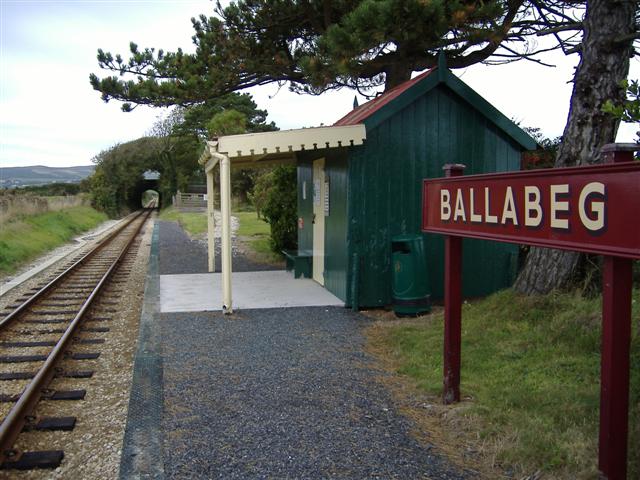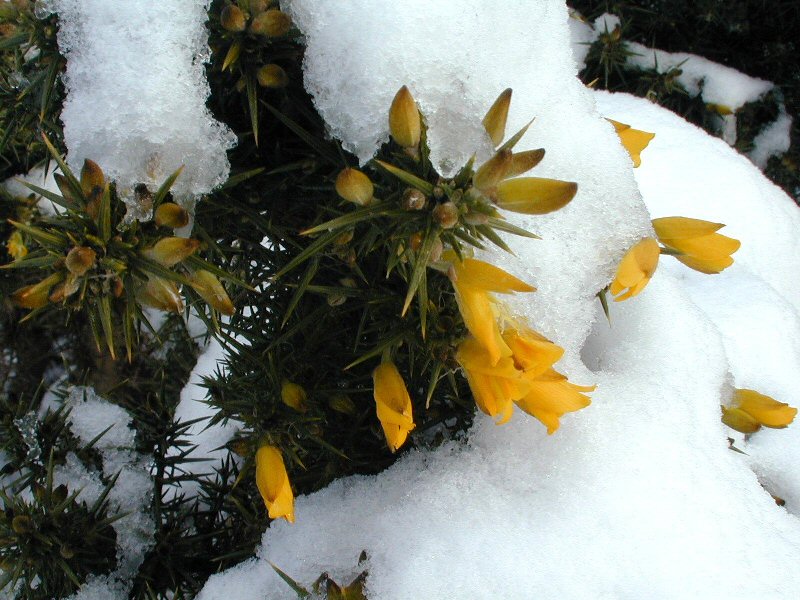|
Ballabeg, Lonan
There are about eight small places on the Isle of Man with the name Ballabeg. The name Ballabeg derives from the Manx which means small homestead; although the spelling is different, it is pronounced approximately the same as the English name. This article is about the hamlet of Ballabeg in the parish of Lonan, on the east of the island, overlooking Laxey Bay. The settlement dates from at least 1643, when a ''Ballabegg'' was recorded on the Castle Rushen Manorial Roll, under the ownership of Furness Abbey. It is about 300 metres from the sea shore. Ballabeg in Lonan is located 9 km or nearly 6 miles NE of the capital, Douglas, and 2 km south of the village of Laxey. The hamlet only consists of a farm and a handful of houses, but also is home to the small Ballabeg tram stop which celebrated its centenary in 2005. When the Manx Electric Railway was built through Ballabeg in 1894 an ancient Celtic keeill and adjoining burial ground were discovered. The keeill was known ... [...More Info...] [...Related Items...] OR: [Wikipedia] [Google] [Baidu] |
Ballabeg
Ballabeg () is a village on the Isle of Man. It is in the parish of Arbory (parish), Arbory in the Local government in the Isle of Man, sheading of Rushen, in the south of the island near Castletown, Isle of Man, Castletown. There are several small villages and hamlets with the name, although Ballabeg in Arbory is the most well-known and populous. History The name Ballabeg derives from the Manx language, Manx which means "small homestead"; although the spelling is different, it is pronounced approximately the same as the English name. The village has previously been recorded on Ordnance Survey maps simply as the village of 'Arbory'. The parish church and school still use this name. There was a small farm with the name 'Ballabeg' but the location of this farm is not certain. At some point in the late 19th or early 20th century the name 'Ballabeg' was applied to the whole village. The village first grew up around the site of a 13th century Franciscans, Franciscan friary at Be ... [...More Info...] [...Related Items...] OR: [Wikipedia] [Google] [Baidu] |
Gorse
''Ulex'' (commonly known as gorse, furze, or whin) is a genus of flowering plants in the family Fabaceae. The genus comprises about 20 species of thorny evergreen shrubs in the subfamily Faboideae of the pea family Fabaceae. The species are native to parts of western Europe and northwest Africa, with the majority of species in Iberia. Gorse is closely related to the brooms, and like them, it has green stems, very small leaves and is adapted to dry growing conditions. However, it differs from the brooms in its extreme thorniness, the shoots being modified into branched thorns long, which almost wholly replace the leaves as the plant's functioning photosynthetic organs. The leaves of young plants are trifoliate, but in mature plants, they are reduced to scales or small spines. All the species have yellow flowers, generally showy, some with a very long flowering season. Species The greatest diversity of ''Ulex'' species is found in the Atlantic portion of the Iberian Peni ... [...More Info...] [...Related Items...] OR: [Wikipedia] [Google] [Baidu] |
Manx Archaeological Register
Manx (; formerly sometimes spelled Manks) is an adjective (and derived noun) describing things or people related to the Isle of Man: * Manx people **Manx surnames * Isle of Man It may also refer to: Languages * Manx language, also known as Manx or Manx Gaelic, the native Goidelic Celtic language of the Indo-European language family of the Isle of Man * Manx English, the English dialect of the Isle of Man Animals and plants * Manx cat, a cat breed with no tail or sometimes a short tail, originating on the Isle of Man * Manx Loaghtan, a breed of sheep, originating on the Isle of Man * Manx Rumpy, a breed of chicken, not originating on the Isle of Man * Manx robber fly (''Machimus cowini''), an insect * Manx shearwater (''Puffinus puffinus''), a seabird * Isle of Man cabbage (''Coincya monensis monensis''), sometimes called the Manx cabbage * Cabbage tree (New Zealand) (''Cordyline australis''), sometimes called the Manx palm * Extinct animals from the Isle of Man Other uses * ... [...More Info...] [...Related Items...] OR: [Wikipedia] [Google] [Baidu] |
Marine Nature Reserve
Marine nature reserve (MNR) is a conservation designation officially awarded by a government to a marine reserve of national significance. Republic of Ireland Lough Hyne, a marine lake off of County Cork, is Ireland's only marine nature reserve. United Kingdom Marine nature reserves were introduced in the UK by the Wildlife and Countryside Act 1981, and were designed to conserve marine life and geological or physiographical features of special interest. They have similar status and protection to national nature reserves, but were specifically concerned with a marine environment, including both the sea and seabed. In the UK, there are only three statutory MNRs: Lundy Marine Nature Reserve at Lundy Island (Bristol Channel), Skomer Marine Nature Reserve (Pembrokeshire) and Strangford Lough (County Down). There is a non-statutory voluntary MNR at St Abbs Head, Berwickshire. Marine conservation zones Schedule 12 of the Marine and Coastal Access Act 2009 allows the conversion the ... [...More Info...] [...Related Items...] OR: [Wikipedia] [Google] [Baidu] |
Irish Sea
The Irish Sea is a body of water that separates the islands of Ireland and Great Britain. It is linked to the Celtic Sea in the south by St George's Channel and to the Inner Seas off the West Coast of Scotland in the north by the North Channel (Great Britain and Ireland), North Channel. Anglesey, North Wales, is the largest island in the Irish Sea, followed by the Isle of Man. The term ''Manx Sea'' may occasionally be encountered (, , ). On its shoreline are Scotland to the north, England to the east, Wales to the southeast, Northern Ireland and the Republic of Ireland to the west. The Irish Sea is of significant economic importance to regional trade, shipping and transport, as well as fishing and power generation in the form of wind power and nuclear power plants. Annual traffic between Great Britain and Ireland is over 12 million passengers and of traded goods. Topography The Irish Sea joins the North Atlantic at both its northern and southern ends. To the north, the ... [...More Info...] [...Related Items...] OR: [Wikipedia] [Google] [Baidu] |
Raad Ny Foillan
is a coastal long-distance footpath in the Isle of Man. Because it is a closed loop around the coast, it can be walked in either a clockwise or an anti-clockwise direction. Route and history The ' starts and finishes at the Millennium Bridge over Douglas Harbour. The path, which is in length, forms a complete loop around the Manx coast, waymarked with signs showing a gull on a blue background. The walk was created to mark the Island's "Heritage Year" celebrations in 1986 and generally follows the coast, passing through terrain varying from shingle beaches at the Ayres to over hills and cliffs. The route comprises the following sections: *Douglas to Castletown, including the Langness peninsula * Castletown to Port St Mary, *Port St Mary to Port Erin, *Port Erin to Peel, (this section can be shortened by leaving out Bradda Head and the Niarbyl) *Peel to Kirk Michael, *Kirk Michael to Jurby, *Jurby to Point of Ayre, * Point of Ayre to Ramsey, * Ramsey to Maughold, ... [...More Info...] [...Related Items...] OR: [Wikipedia] [Google] [Baidu] |
Level Crossing
A level crossing is an intersection where a railway line crosses a road, Trail, path, or (in rare situations) airport runway, at the same level, as opposed to the railway line or the road etc. crossing over or under using an Overpass#Railway, overpass or tunnel. The term also applies when a light rail line with separate Right-of-way (railroad), right-of-way or reserved track crosses a road in the same fashion. Other names include railway level crossing, railway crossing (chiefly international), grade crossing or railroad crossing (chiefly American), road through railroad, criss-cross, train crossing, and RXR (abbreviated). There are more than 100,000 level crossings in Europe and more than 200,000 in North America. Road-grade crossings are considered incompatible with high-speed rail and are virtually non-existent in European high-speed train operations. File:The 5.20 for West Kirby leaving Hoylake - geograph.org.uk - 1503619.jpg, A level crossing at Hoylake, Merseyside, Engl ... [...More Info...] [...Related Items...] OR: [Wikipedia] [Google] [Baidu] |
Human Settlement
In geography, statistics and archaeology, a settlement, locality or populated place is a community of people living in a particular location, place. The complexity of a settlement can range from a minuscule number of Dwelling, dwellings grouped together to the largest of cities with surrounding Urban area, urbanized areas. Settlements include Homestead_(building), homesteads, hamlet (place), hamlets, villages, towns and city, cities. A settlement may have known historical properties such as the date or era in which it was first settled or first settled by particular people. A number of factors like war, erosion, and the fall of great empires can result in the formation of abandoned settlements which provides relics for archaeological studies. The Human settling, process of settlement involves human migration. In the field of geospatial predictive modeling, settlements are "a city, town, village or other agglomeration of buildings where people live and work". A settlement co ... [...More Info...] [...Related Items...] OR: [Wikipedia] [Google] [Baidu] |
Ramsey, Isle Of Man
Ramsey () is a coastal town in the north of the Isle of Man. In 2024 it became the largest town on the Island after Douglas, Isle of Man, Douglas was granted city status. Ramsey's population is 8,288 according to the Census in the Isle of Man, 2021 Census. It has one of the biggest harbours on the Island, and has a prominent semi-derelict pier, called the Queen's Pier, Ramsey, Queen's Pier (currently under restoration). It was formerly one of the main points of communication with Scotland. Ramsey has also been a route for several invasions by the Vikings and Scottish people, Scots. Ramsey is also known as "Royal Ramsey" due to royal visits by Queen Victoria and Albert, Prince Consort, Prince Albert in 1847 and by King Edward VII and Queen Alexandra in 1902. History The name of the town derives from the Old Norse ''hrams-á'', meaning "wild garlic river", More specifically, it refers to the plant known as ramsons, buckrams or wild garlic, in Latin ''Allium ursinum''. The Isle ... [...More Info...] [...Related Items...] OR: [Wikipedia] [Google] [Baidu] |
Headland
A headland, also known as a head, is a coastal landform, a point of land usually high and often with a sheer drop, that extends into a body of water. It is a type of promontory. A headland of considerable size often is called a cape.Whittow, John (1984). ''Dictionary of Physical Geography''. London: Penguin, 1984, pp. 80, 246. . Headlands are characterised by high, breaking waves, rocky shores, intense erosion, and steep sea cliff. Headlands and bays are often found on the same coastline. A bay is flanked by land on three sides, whereas a headland is flanked by water on three sides. Headlands and bays form on discordant coastlines, where bands of rock of alternating resistance run perpendicular to the coast. Bays form when weak (less resistant) rocks (such as sands and clays) are eroded, leaving bands of stronger (more resistant) rocks (such as chalk, limestone, and granite) forming a headland, or peninsula. Through the deposition of sediment within the bay and the erosio ... [...More Info...] [...Related Items...] OR: [Wikipedia] [Google] [Baidu] |





